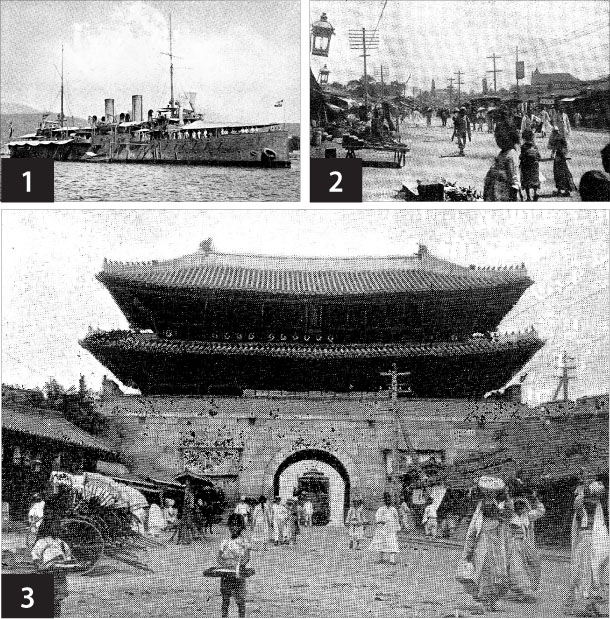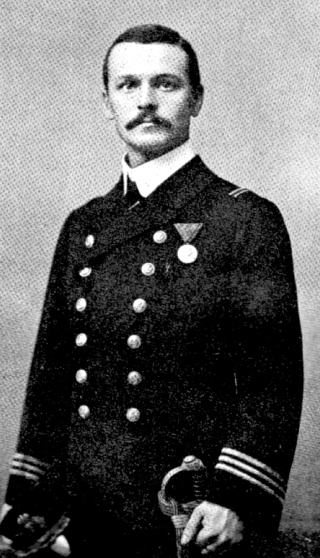An Austro-Hungarian voyage around Korea in 1908

to mark the 30th anniversary of Korea-Hungary diplomatic ties
Mozes Csoma
The author is the ambassador of Hungary to Korea.
In 1908, the Austro-Hungarian warship SMS Kaiser Franz Joseph I, which was stationed in East Asia, visited the Korean Peninsula. The physician on board happened to be a Hungarian gentleman, Dr. Dezso Bozoky, who was also an amateur photographer and took more than 60 photos in Jemulpo, Seoul, Gomundo and Busan. He spent only a few days on the peninsula, but he made sharp-eyed observations about Korea and other East Asian countries, later collecting and publishing them in two volumes, richly illustrated with his own photos. The first volume is about China and Korea, and the second is about Japan.
Dr. Dezso Bozoky was born in 1871 in Nagyvarad (in today’s Romania) and received his physician diploma in 1894 in Budapest. He joined the Austro-Hungarian Navy and left its naval base of Pula in Croatia for East Asia in 1907. The cruiser SMS Szigetvar headed to Singapore via the Suez Canal, the Red Sea and the Indian Ocean. According to the physician’s reminiscences, the exotic voyage made the crew quite excited. Everybody studied English, and the officers brought chairs to the ship’s deck and enjoyed the sunshine as if on board a yacht.
The cruiser rendezvoused with the Austro-Hungarian warship SMS Kaiser Franz Joseph I in Singapore, where the crews exchanged ships. The cruiser headed back to Pula, and the warship went to visit Hong Kong, Shanghai and Vladivostok in Russia, but while it made the trip between China and Japan several times, 18 months had passed before it finally arrived at a Korean port. The captain postponed the visit several times on account of the uncertain conditions caused by the abdication of Emperor Gojong (1852-1919) and the resistance of the former soldiers of the dissolved Korean army. The Hungarian physician wrote the following in his travelogue: “During our voyages between China and Japan, we saw many times [Korea’s] blue mountains on the horizon, but it wouldn’t be a decent step if our warship visited a Korean seaport meanwhile internal crises and turbulences were occurring.” The incidents mentioned by the physician happened just two years after the so-called Eulsa Treaty, which established the Japanese protectorate over the Korean Empire.

1. Austro-Hungarian warship SMS Kaiser Franz Joseph I 2. Downtown Seoul 3. Namdaemun Gate [MOZES CSOMA]
Finally, in 1908, the warship weighed anchor in Yantai, China, and headed to the direction of Jemulpo. As usual, there was a dense fog on the Yellow Sea, and the captain did not take the risk of approaching the port, where reefs made the entry hazardous. They remained stationary for almost 24 hours, continuously tolling the ship’s bell to avoid collision with other vessels. When the weather conditions improved, the ship approached Jemulpo and cast both its anchors 3 nautical miles outside the port. The next morning, Dr. Bozoky and his fellow officers took the warship’s small steamboat and reached the soil of the Korean Empire. The Hungarian physician observed the respective quarters of the Chinese and the Japanese on the side of the hill that overlooked the port, completely separate, divided by a flight of stairs that led to the top of the hill. The stairs, still extant, can be seen in one of the physician’s photos: The area left of them was once inhabited by the Chinese, the part on the right by the Japanese. The physician observed two- and three-story raw brick houses in the Chinese quarter, which are mostly also extant with many jajangmyeon (Chinese-style black bean noodles) restaurants. Dr. Bozoky made observations in the Japanese quarter as well, which reminded him of Yokohama in Japan with its tidy order. In his travelogue, the physician wrote the following: “White-gloved Japanese soldiers keep order in the streets. There are those red postboxes on every corner that are familiar from Japan, and the sky is all but obscured by the thousands of telegraph and telephone wires.” He looked around in the local Shinto shrine too, where he saw a lifeboat from the Russian cruiser Varyag, which was sunk by the Japanese Navy near Jemulpo in 1904 at the beginning of the Russo-Japanese war. That lifeboat was almost the only thing to have survived from the Russian warship. Dr. Bozoky also saw the Japanese memorial in the Korean port city, which commemorated the war victory. Jemulpo also had European residents, whose dwellings the physician described as: “The European colony here lives on a beautifully landscaped little hill by the port. On this wholesome hillside, the mansions of the consulates stand in flowery gardens, and there are also a few European businessmen living here. The tiny foreign colony maintains, with great sacrifice, a splendid little club, which has, all in all, only some 30 members.”
On the train to Seoul
The Hungarian physician and his fellow officers took a morning train in Jemulpo to travel to the capital of the Korean Empire. U.S. open coaches with lavish furnishings were used on the line. As he wrote in his travelogue, the large windows allowed a view of the traditional thatched adobe houses in the outskirts of Jemulpo, before the train, which followed what is now the course of Seoul Metro Line 1, pulled in at Juan and Yeouido Stations. Dr. Bozoky mentioned Yongsan, which lies along the northern bank of the Han River, citing its Japanese name, and was under the impression that it was a separate town. He saw a multitude of bamboo junks on the river, sailing in the direction of the Yellow Sea. At the end of a two-hour journey, the train arrived at Namdaemun Station, which was named after the southern gate of the city. At the time, the emblematic gate had changed little since its construction in the Middle Ages. By the time of Dr. Bozoky’s visit, the southern gate had become isolated in the modern city and was a monument and tourist sight.
Dr. Bozoky and his fellow officers spent only a day in Seoul, but even such a short stay allowed them to make important observations. They could see the strange coexistence of the old conditions and the latest technological developments. The physician took several photos on the trams in Seoul, which were installed by a U.S. company in 1899. According to his description, the regular cars were divided into three sections. There were open parts on the front and rear of the cars, with outward-facing benches, allowing passengers to jump on and off the moving vehicle. In the middle, there was a closed compartment for ladies, which was decorated with the Taegeuk mark, a traditional Korean symbol of opposing forces. He wrote the following in his reminiscences: “There are always a lot of Japanese soldiers on the tram, among the top-hatted, white-clothed Korean men. If a tram dashing in a European milieu, along modern apartment buildings, is a natural sight, it is decidedly odd to see a car slide out of the darkly gaping mouth an old [eastern] city gate with a fancy roof, with silent passengers dressed in snow-white clothes.”

Hungarian physician Dezso Bozoky [MOZES CSOMA]
Dr. Bozoky and his companions visited Gyeongbok Palace, which was already an empty site at that time. The former Korean ruler, Emperor Gojong, left the palace soon after his wife, whose posthumous name is Empress Myeongseong, was assassinated there by Japanese agents in 1895. The Hungarian physician fully appreciated the sadness of Gyeongbok Palace, especially when inspecting the location where the empress was murdered. In his travelogue, he summarized his impressions as follows: “This sad princely park is the living witness of an old song, of old glory; the proud imperial palace is a memorial to a time gone forever. Standing empty until the end of time, the throne room will no longer see the monarch of the ‘land of morning glory,’ with his horsehair top hat on his head and the dignitaries of the country around him, and what will echo in the deserted corridors, at most, will be the steps of tourists like me. [...] Everything here reminds one of passing, of sad death.”
The Hungarian physician made acute observations about the changes that took place in the country that had lost its independence and about the actual status quo. From a corner pavilion of the wall surrounding Gyeongbok Palace, he wrote, he could clearly see how the modern Japanese district was encroaching on the territory of traditional Korean residences. Walking through the modern district, the Hungarian visitor felt as if he were in Japan, noting especially the characteristic tea houses with their paper lanterns, where Kirin Beer, a famous Japanese staple, was also available. The Austro-Hungarian officers had lunch at the Hotel du Palais, outside Deoksu Palace and then smoked cigars on the terrace, while taking in the entrance of the new ruler’s residence. Emperor Sunjong (1874-1926), the son of the abdicated ruler, had very limited influence on the country’s development because the real power was held by the Japanese resident-general. In his travelogue, Dr. Bozoky mentioned an incident of some symbolic value: he saw a frock-coated Japanese gentleman ride through the gate, without pause, in his rickshaw, which was drawn by horsehair top hat-wearing Koreans.
In the afternoon on that day, the Hungarian physician and his fellow officers visited the capital’s “bazaar,” which in all probability was Namdaemun Market. In the early evening the company made their way back to Jemulpo and went aboard warship Kaiser Franz Joseph I. Dr. Bozoky had mixed feelings as he left behind the capital of the Korean Empire because he knew that the days of old Seoul were numbered.
The Austro-Hungarian warship continued its voyage to Busan via the island of Gomundo, where the physician helped to medicate the local inhabitants. After he returned from East Asia, Dr. Bozoky worked as a civilian doctor. He passed away in 1957, donating the photos and objects he had purchased during his East Asian journey to the Ferenc Hopp Museum of Asiatic Art in Budapest. Toward the end of his life, in the early 1950s, he learnt that a fratricidal war devastating the Korean Peninsula and that the Hungarian government had sent a large medical team to North Korea and installed a field hospital there. It is a very interesting, yet-to-be-answered question whether any of the Hungarian medical team members preparing to leave for North Korea contacted the former naval physician to ask him to share his experiences. It will certainly take more research to find an answer to that question.










with the Korea JoongAng Daily
To write comments, please log in to one of the accounts.
Standards Board Policy (0/250자)